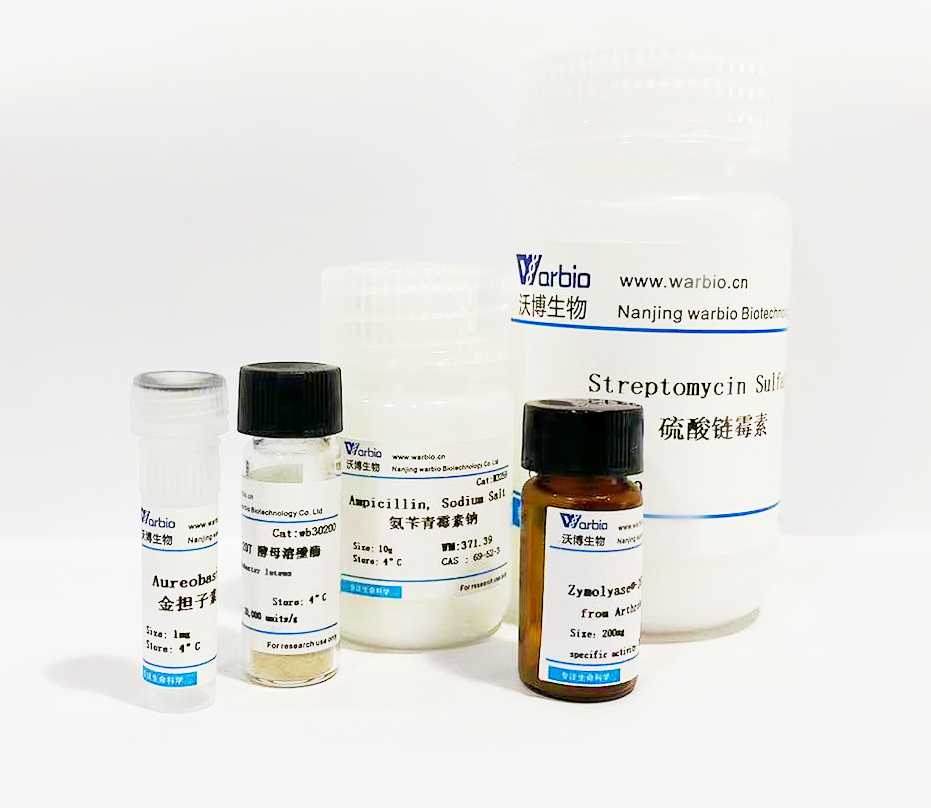

EveGreen (20× in water) EveGreen(20×水溶液),同EvaGreen
| 货号 | M0756 | 售价(元) | 378 |
| 规格 | 1ml | CAS号 |
- 产品简介
- 相关产品
产品信息
|
货号 |
名称 |
规格 |
价格 |
|
M0756 |
EveGreen (20× in water) EveGreen(20×水溶液),同EvaGreen |
1ml |
378 |
产品简介:
EvaGreen 是一种用于实时定量 PCR(qPCR)的DNA结合染料。它的诸多优点使它远胜于SYBR Green I。除了有相似的光谱特性,EvaGreen有三个主要特点使它区别于SYBR Green I。
EvaGreen对PCR的抑制性远小于SYBR Green I。因此,使用EvaGreen进行的qPCR实验可以使用快速PCR步骤。同时,EvaGreen在实验中可以使用较高的浓度,从而获得远强于SYBR Green I扩增信号。较高浓度的EvaGreen也消除了“染料重分布”的缺陷,使EvaGreen既可用于多重PCR,也可用于高分辨率(高清晰)熔解曲线分析(HRM)。该分析正被越来越多的用于PCR后的基因分型和异源双链分析。由于SYBR Green I对PCR的抑制性,从而要求其使用浓度必须很低,因此 SYBR Green I无法解决由低浓度造成的染料重分布问题,既不能用于多重PCR也不能用于HRM。同时,染料重分布问题也可能影响常规熔解曲线的可靠性,因为低熔点的DNA链可能由于这种原因而无法检测到 。
EvaGreen的稳定性极强。在正常的储存、操作和PCR过程中不会被破坏。在缓冲溶液中的染料可以安全的储存在室温或冰箱里,也可以反复冻融。与之相反,SYBR Green I不稳定而且降解后对PCR抑制性更强 。
EvaGreen降低了细胞膜透性,因而比SYBR Green I更加安全。测试结果显示,EvaGreen既没有诱变性也没有细胞毒性。相反,虽然 SYBR Green I本身诱变性很弱,但它在细胞中可能抑制了正常DNA的修复机制,使其有诱变增强作用。
EvaGreen的特性:
1. 极高的灵敏度:在推荐浓度下使用时可以获得最强的PCR扩增信号。
2. PCR 抑制性极小:智能化的“按要求释放”DNA结合技术使得EvaGreen对PCR的抑制远小于SYBR Green I。
3. 和快速PCR兼容:对PCR干扰极小,从而极大的缩短了PCR延伸时间。
4. 非常适合HRM分析:无“染料重分布”缺陷,兼容PCR后的高分辨率熔解曲线(HRM)分析。
5. 兼容多重 PCR:在推荐浓度下使用时,无扩增子之间的染料迁移现象。
6. 超强稳定性:在大部分生化条件下非常稳定,可在室温下储存并可反复冻融。
7. 安全性好:细胞膜穿透性测试表明,EvaGreen几乎不能穿透细胞膜,安全性高。
8. 优越的兼容性:和SYBR Green I光谱相似,和各知名品牌的qPCR仪器兼容。用EvaGreen 替代SYBR Green I,无需改变任何您目前使用的操作步骤和仪器设备。
英文版
EvaGreen 20× in water ; Concentration: 20× (25 uM) in water
Color and Form: Light orange solution
Product Description
EvaGreen is a very sensitive dye for the detection of double stranded DNA (dsDNA). The dye is a green fluorescent nucleic acid dye with features that make it useful for non-specific detection of amplification in realtime qPCR experiments.
Compared with the widely used SYBR Green I, EvaGreen dye is generally less inhibitory toward PCR and less likely to cause nonspecific amplification , EvaGreen dye can be used at a much higher dye concentration than SYBR Green I, resulting in more robust PCR signal.
The PCR reaction can be monitored using our existing optical setting for SYBR Green I or FAM on any commercial real-time PCR cycler. The qPCR protocol provided below is for PCR using regular non-hot-start Taq. Use of a hot-start Taq may require some adjustment of PCR buffer composition in terms of ionic strength and pH to best take the advantage of EvaGreen dye. The water soluble solvent such as DMSO or glycerol are frequently added to stabilize master mixes. These components and pH may need to be optimized depending on the enzyme used.
Protocol
Calculate the volumes of reagents required for the reaction.
|
Reagent |
Final concentration in the mixture |
|
dNTP |
0.2mM each |
|
ddH2O |
Adjust to final volume |
|
Taq polymerase buffer without magnesium |
1× |
|
Each of primers |
0.1-1 uM |
|
Taq DNA polymerase |
1-5 units per reaction |
|
MgCl2 |
2.5 mM |
|
EvaGreen |
1× |
1.On ice, prepare a 1x master mix containing no DNA, by mixing the components in the following order: water, Taq polymerase buffer, dNTPs, MgCl2, EvaGreen, Taq polymerase, and primers.
2.Transfer master mix to tubes or plates. Add DNA (50 ng per reaction).
3.Proceed with amplification according to your instrument manufacturer. Perform real-time PCR on a thermocycling fluorometer and record the fluorescence signal at the annealing or extension step.
Notes:
1) Always use positive and negative controls when doing qPCR experiments.
2) The temperature program for the qPCR amplification does not differ from standard PCR program for the given template and primers.
3) For the detection, FAM or FAM/SYBR channel should be used.
4) When using ABI Sequence Detection Systems, make sure to select NONE for the passive reference under the tab WELL INSPECTOR.
5) BSA may be required if the reaction is run on a Roche LightCycler. A final BSA concentration of 0.5 mg/mL may be sufficient. With SYBR Green, addition of a protein such as BSA results in a fluorescence increase, which provides a background signal that triggers the start of a LightCycler. Because EvaGreen dye is less sensitive to proteins, you may need to adjust the instrument setting (for background fluorescence) so that the instrument will start.
- 上一页:无上一条
- 下一页:WarGreen核酸染料(10,000×水溶液)

